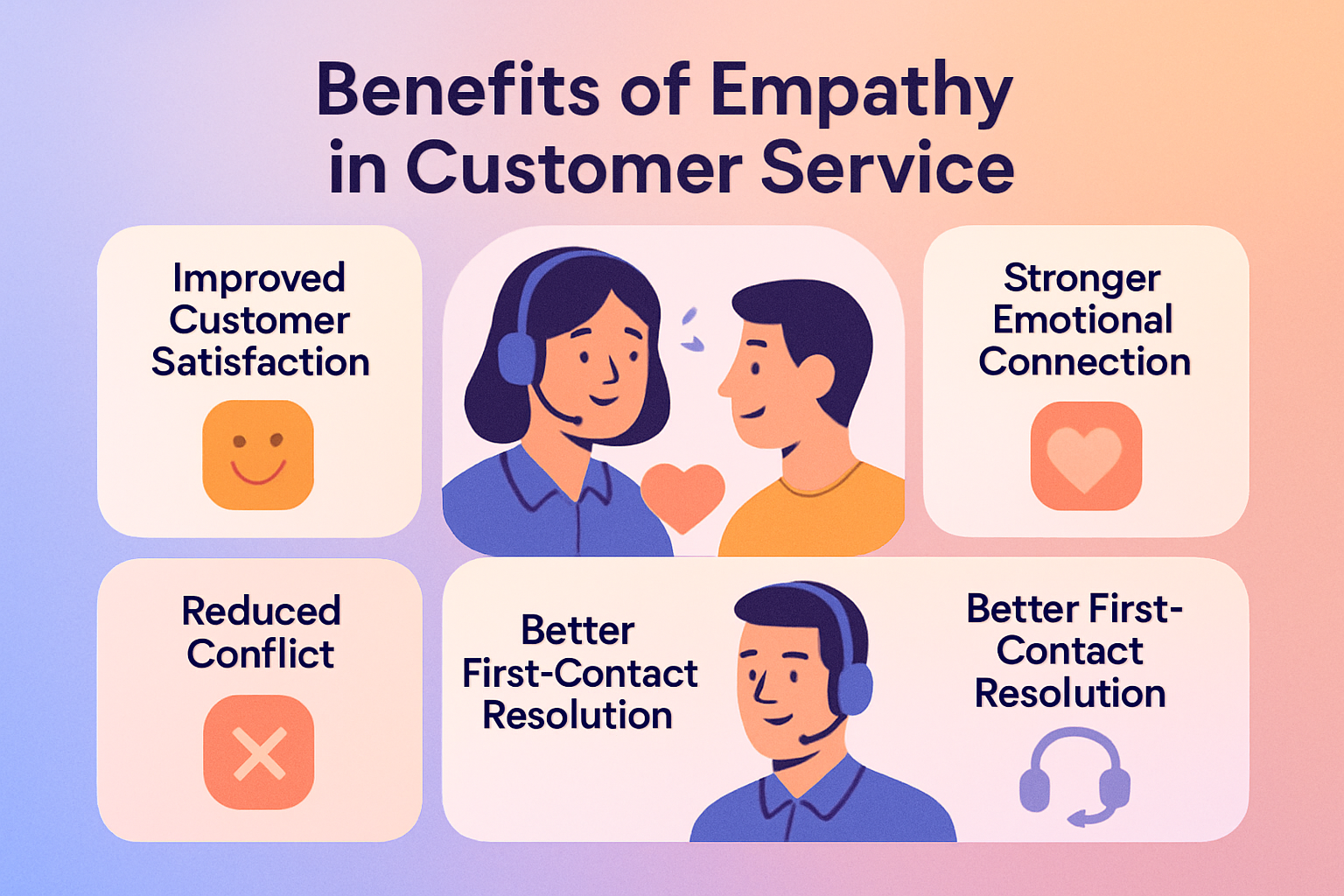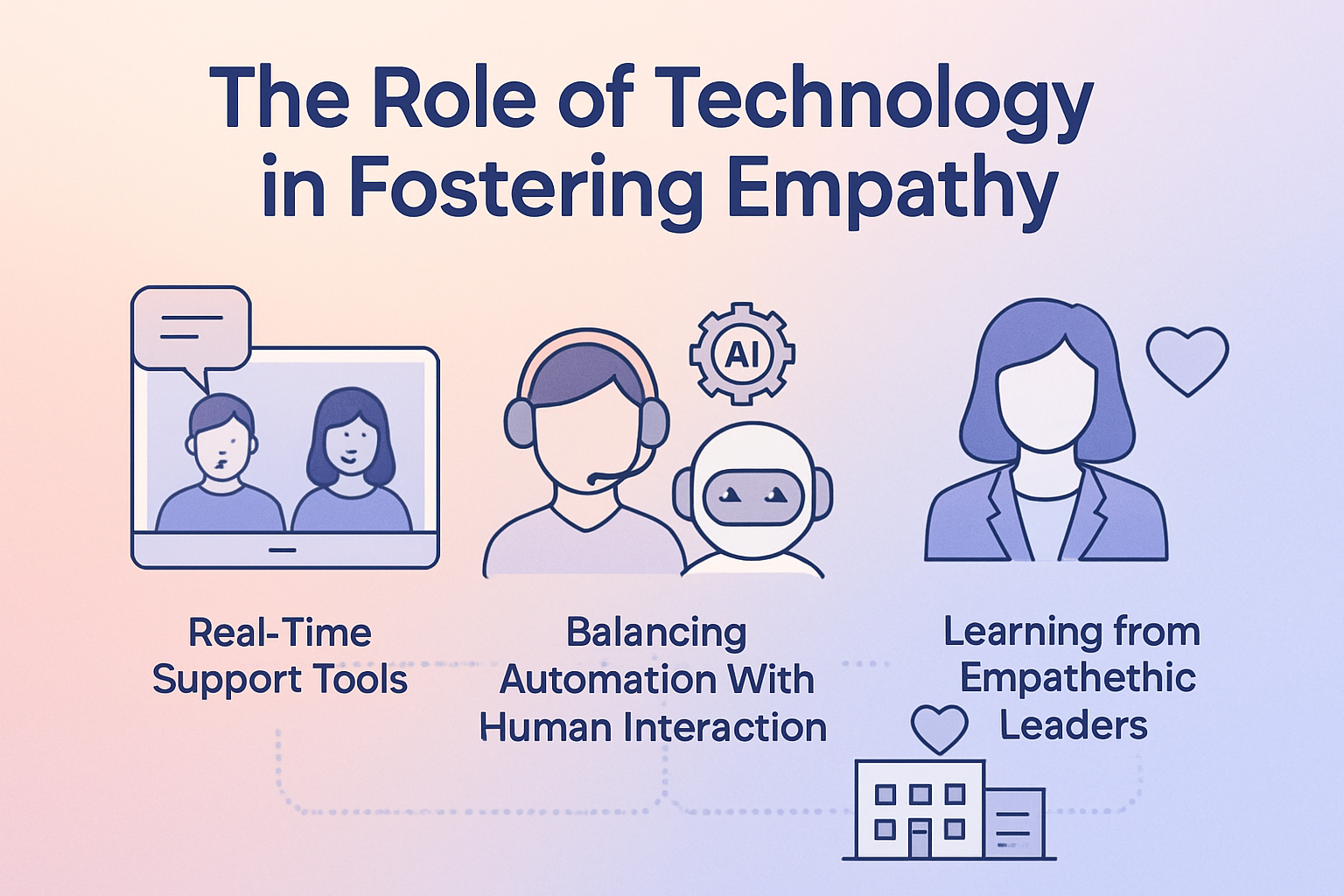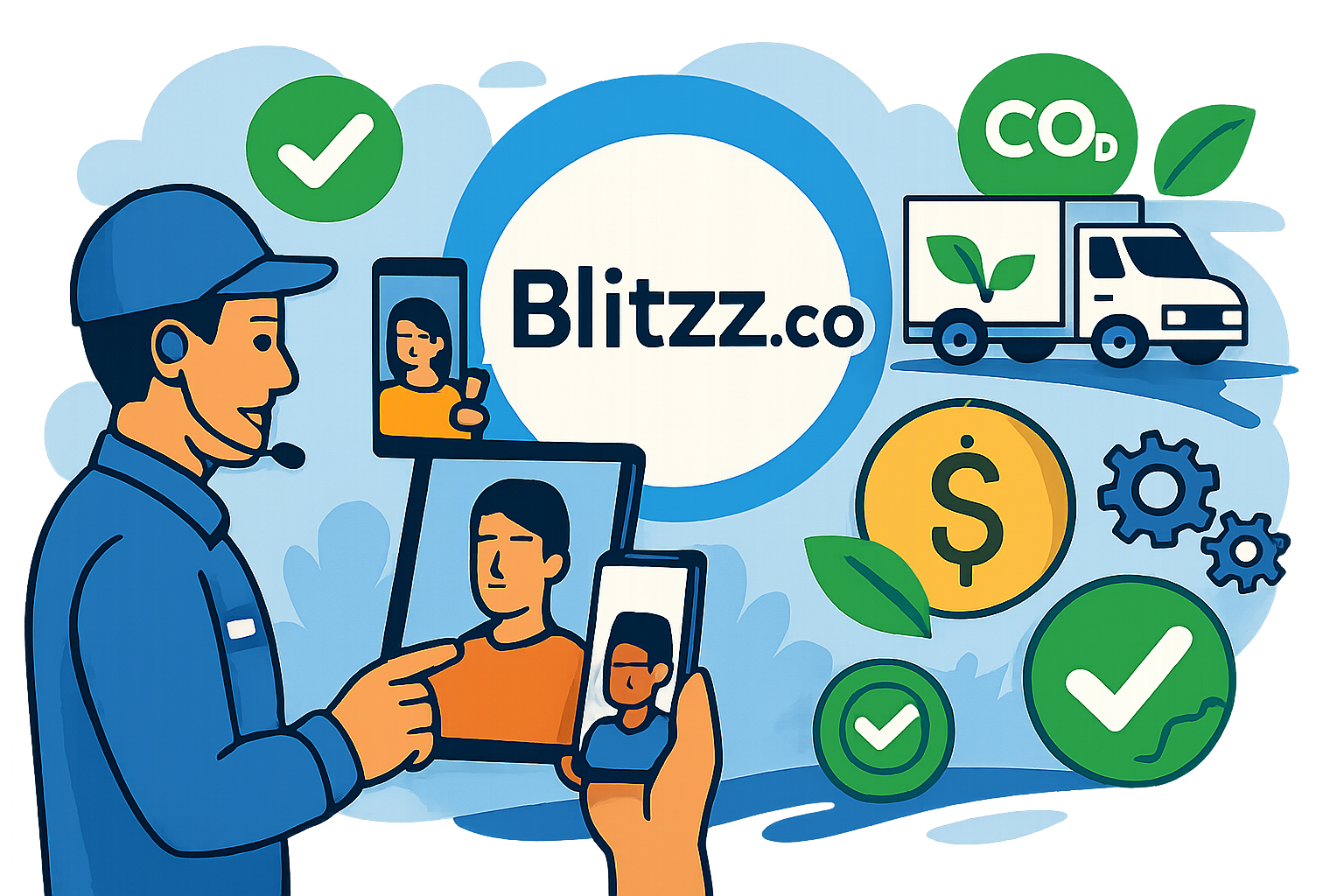Achieving Satisfaction in Customer Service: The Role Of Empathy
In a world where everyone is racing against the clock, empathy stands out as a quiet but powerful force that helps customers feel truly connected. Yet in many call centers, agents are under strict time limits to resolve each issue.
On average, call centers aim to resolve calls in just 17.11 seconds, with 25% of teams achieving between 6 and 10 seconds. While these targets improve speed, empathy often gets lost in the process, leading to more escalations and frustrated customers. Instead of focusing on genuinely resolving problems, the emphasis shifts to ticking boxes and moving on to the next call.
In this article, we’ll explore why empathy is a crucial driver of customer satisfaction in call centers and examine tools and strategies that allow teams to maintain speed without sacrificing resolution quality.

Understanding Empathy in Customer Service
What Empathy Really Means
Empathy is the ability to truly understand and share someone else’s feelings. In customer service, this means seeing the world through your customer’s eyes—recognizing their frustrations, celebrating their wins, and understanding their needs. It goes beyond simply solving problems. It’s about forming genuine human connections that make every interaction meaningful.
The Power of Emotional Connection
Empathy lays the foundation for trust—the most valuable currency in customer service. When customers feel genuinely understood, loyalty naturally follows, and they’re more likely to advocate for your brand. This emotional connection transforms brief interactions into long-lasting relationships, turning routine service into experiences that resonate.
Why Empathy Matters More Than Ever
Meeting Evolving Customer Expectations
Today’s customers aren’t satisfied with efficiency alone—they want experiences that resonate on a human level. They seek interactions where they feel valued, understood, and genuinely appreciated. In an era dominated by automation and quick fixes, empathy becomes the differentiator that transforms routine service into meaningful connection.
Empathy as a Strategic Advantage
In competitive markets, empathy is more than a nice-to-have—it’s a strategic advantage. It’s the thread that weaves positive emotional experiences into every customer interaction. Brands that successfully connect emotionally with their customers often see measurable results: increased loyalty, stronger advocacy, and repeat business. When customers feel their emotions are truly acknowledged, they not only return—they share their positive experiences with others, amplifying your brand’s impact.

The Benefits of Empathy in Customer Service
Boosting Customer Satisfaction
Empathy is more than just kindness—it’s a strategic tool that drives meaningful customer satisfaction. Research shows that when service feels genuinely understanding, overall experiences improve dramatically. Customers who feel heard and valued are more likely to return, deepening their loyalty and creating long-term relationships.
Strengthening Loyalty and Retention
Empathetic interactions turn customers into advocates. When people sense that your brand truly cares about their experiences, they’re more likely to stay loyal and recommend your services to others. Even a single thoughtful interaction can leave a lasting impression, making customers feel appreciated well beyond the transaction itself.
Resolving Conflicts Effectively
Conflicts are inevitable in any service environment. Yet empathy equips agents to navigate tense situations with skill and care. By acknowledging and validating a customer’s feelings, agents can collaborate to find solutions that satisfy both parties. This approach not only resolves issues efficiently but also transforms potentially negative experiences into moments of trust and goodwill.

Best Practices for Fostering Empathy in High-Speed Environments
Prioritize Training and Development
Empathy is a skill that can be learned and strengthened—even in fast-paced call centers. Training programs should focus on active listening, emotional intelligence, and clear, relatable communication. Agents can practice connecting with customers on a human level while still keeping conversations focused and efficient. Role-playing scenarios that balance understanding with timely resolution can help teams build confidence in handling real calls without sacrificing speed.
Create a Customer-Centric, Efficiency-Minded Culture
Empathy shouldn’t be viewed as a trade-off against efficiency. By embedding empathy into the culture, every employee understands that listening and validating customer emotions doesn’t have to slow down service—it can actually streamline problem-solving. Encourage agents to acknowledge feelings quickly, then move efficiently to solutions. When the organization values both speed and human connection, teams can deliver service that satisfies customers emotionally and operationally.
Practice Active Listening with Purpose
Active listening is the cornerstone of empathetic communication, even in time-sensitive environments. Train your team to listen attentively, paraphrase key points, and validate feelings in concise, intentional ways. For example, a brief acknowledgment like, “I understand why this would be frustrating, and I’ll make sure we get it resolved quickly,” combines empathy with a clear path to resolution. This approach allows agents to maintain speed while still making customers feel genuinely heard.
Balance Metrics with Meaning
Call centers often focus on metrics like Average Speed of Answer (ASA) and handle time, but empathy-driven service can actually improve efficiency. By quickly understanding the customer’s underlying concerns, agents can resolve issues more effectively, reducing repeat calls and escalations. Encouraging teams to integrate empathy into every interaction ultimately supports both customer satisfaction and operational targets.

Overcoming Challenges in Implementing Empathy
Tackling High Employee Turnover
High turnover is a persistent challenge in customer service, often fueled by stress and job dissatisfaction. Empathy can transform this dynamic. When agents feel empowered to engage with customers on a meaningful level, their work becomes more rewarding and purposeful. This emotional connection not only enhances the customer experience but also improves job satisfaction, helping retain skilled and motivated team members.
Addressing Low Customer Satisfaction
Low customer satisfaction isn’t just about fixing processes—it’s about understanding the emotions behind each interaction. By fostering empathy, businesses can uncover what truly matters to customers, turning negative experiences into opportunities for meaningful resolution. Empathetic service builds trust, encourages loyalty, and creates experiences that leave customers feeling valued and heard.
Bridging Communication Barriers
Communication gaps can easily undermine even the best customer service. Empathy helps bridge these gaps by allowing agents to interpret not only words but also the emotions behind them. Encouraging active listening, validation, and open dialogue enables agents to navigate complex or tense situations effectively, resulting in smoother resolutions and stronger customer relationships.
Balancing Empathy with Speed
In high-volume call centers, the pressure to resolve calls quickly can sometimes conflict with providing empathetic service. However, empathy doesn’t have to slow down interactions. Agents can acknowledge customer feelings quickly, use concise validation statements, and move efficiently to solutions. Striking this balance ensures customers feel understood while meeting operational targets, reducing repeat calls and enhancing overall satisfaction.

The Role of Technology in Fostering Empathy
Leveraging Real-Time Support Tools
Technology doesn’t have to replace the human touch—it can amplify it. Tools like Blitzz enable real-time video support, allowing agents to connect visually and emotionally with customers. Seeing a friendly face and observing non-verbal cues can turn routine problem-solving into a more personal, empathetic experience. This blend of tech and human connection ensures that customers feel understood, even in fast-paced environments.
Balancing Automation with Human Interaction
Automation can streamline repetitive tasks, freeing agents to focus on meaningful interactions. But efficiency should never come at the expense of empathy. Customers respond best to interactions that feel personal and attentive. By combining smart automation with empathetic engagement, businesses can deliver service that is both fast and emotionally resonant—creating experiences that satisfy customers on every level.
Learning from Empathetic Leaders
Some companies have mastered the art of empathetic service, setting the gold standard for the industry. Zappos, for example, is celebrated for going above and beyond to meet customer needs, often prioritizing human connection over rigid processes. Their commitment to empathy has cultivated not only loyalty but also a reputation for genuinely caring service.
Conclusion
Empathy isn’t just a “nice-to-have” skill—it’s a cornerstone of exceptional customer service. As customer expectations continue to evolve, the ability to understand, connect with, and respond to emotions becomes more critical than ever. By making empathy a priority, businesses can elevate customer satisfaction, build lasting loyalty, and stand out in a crowded marketplace.
Ready to transform your approach to customer service? Integrating empathy into every interaction allows you to create meaningful connections that go beyond transactions, turning customers into advocates and experiences into lasting impressions. The results speak for themselves—better resolution rates, stronger relationships, and a reputation for genuinely caring service.
To see empathy in action, explore how real-time visual support can enhance your team’s ability to connect with customers. Schedule a demo with Blitzz today and take your customer service to the next level!
Frequently Asked Questions
What is empathy in customer service, and why does it matter?
Empathy in customer service is the ability to understand and share the feelings of your customers. It matters because it builds trust, strengthens relationships, and transforms routine interactions into meaningful experiences, ultimately driving loyalty and satisfaction.
How can call center agents balance empathy with the need for speed?
Agents can balance empathy and efficiency by actively listening, acknowledging customer feelings concisely, and moving quickly to resolution. Using structured scripts that incorporate empathetic statements or real-time support tools can help maintain speed without compromising the quality of service.
How does empathy impact customer loyalty and retention?
When customers feel genuinely understood and valued, they are more likely to stay loyal and recommend your brand. Even a single empathetic interaction can leave a lasting impression, increasing the likelihood of repeat business and advocacy.
Can technology help foster empathy in customer service?
Yes! Tools like real-time video support, live chat, or visual guidance platforms allow agents to connect with customers on a more personal level. Technology can enhance empathetic interactions by enabling clearer communication, faster problem-solving, and a more human touch in digital experiences.
What are practical ways to train customer service teams to be more empathetic?
Training programs can focus on active listening, emotional intelligence, and handling difficult situations with care. Role-playing, coaching, and feedback sessions help agents practice empathetic communication while maintaining efficiency, ensuring they can resolve issues quickly without losing the human connection.



